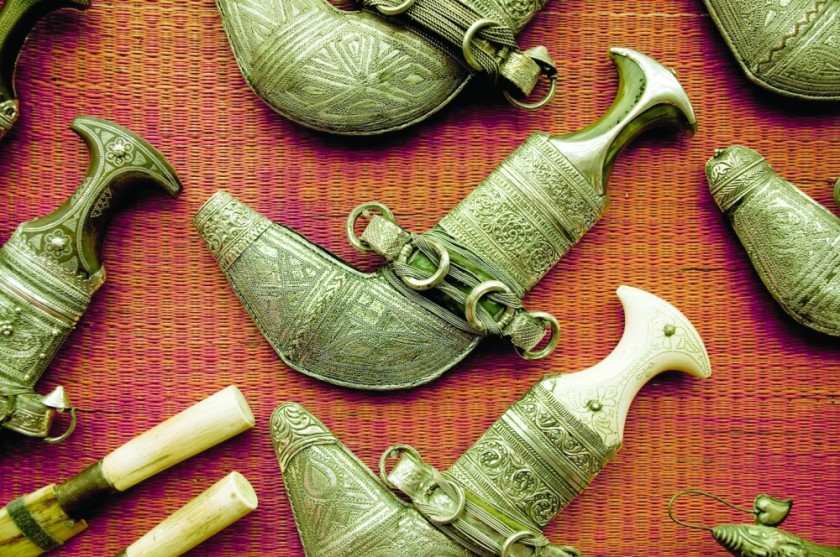

Muscat: Khanjar, the essential element of Oman culture and part of the state emblem, was given UNESCO heritage status on Thursday. The decision came during the the seventeenth session of the Intergovernmental Committee for the Safeguarding of the Intangible Cultural Heritage, being hosted by Morocco from November 28 to December 3.
UNESCO said, "Al Khanjar is a part of traditional dress worn by men in Oman during national and religious events and special occasions such as weddings. An essential element of Omani culture, its manufacture requires significant knowledge and skills that are transmitted from one generation to the next."
The dagger is attached around the waist and includes a belt, handle, blade, scabbard and cover, all made from a variety of materials including wood, leather, cloth and silver. The materials, which are engraved with unique designs, are viewed as a reflection of the connection to the land.
The Khanjar is a part of the state emblem and plays a key role in many Omani customs and traditions. Historical sources and archaeological discoveries indicate that Omanis have worn the Khanjar for centuries. Formal workshops and training also contribute to its transmission.
A highly appreciated gift, the Khanjar is one of the gifts that Omanis give to official guests as an expression of the cultural connection between nations. Many poems in the Omani literature also describe and praise the Khanjar, and Omani artists and photographers have competed in documenting the object and the craft. Wearing the Khanjar is also associated with many, if not all, Omani folk arts.

Al Heda’a, an oral tradition of calling a flock of camels passed on through generations in Oman, Saudi Arabia and the UAE, also made to the Representative List of the Intangible Cultural Heritage of Humanity.
"The rhythmic expression is inspired by poetry, and the herder uses a unique repository of sounds that the camels have become accustomed to in order to direct herds through the desert or pasture to an area for drinking, feeding and milking preparation. Al Heda’a can also be used for swift assembly in case of immediate danger such as sandstorms. Herders train their camels to recognise the difference between right and left, to open their mouths when asked, and to kneel down to be ridden. The practice creates a strong bond between the camels and their herders, as well as among the herders themselves," UNESCO said.
Other prominent listings this year include Al Talli, traditional embroidery skills (UAE); Al Mansaf, a festive banquet and its social and cultural meanings (Jordan); baguette bread (France); bear festivities in the Pyrenees (Andorra, France); beekeeping (Slovenia); crafting and playing the Oud (Iran and Syria); date palm traditions and practices (UAE, Bahrain, Egypt, Iraq, Jordan, Kuwait, Mauritania, Morocco, Oman, Palestine, Qatar, Saudi Arabia, Sudan, Tunisia and Yemen); Furyu-odori, ritual dances (Japan); Harissa, knowledge, skills and culinary and social practices (Tunisia); knowledge and practices related to cultivating Khawlani coffee beans (Saudi Arabia); traditional tea processing (China); and needlework art (Turkmenistan).
Oman Observer is now on the WhatsApp channel. Click here



